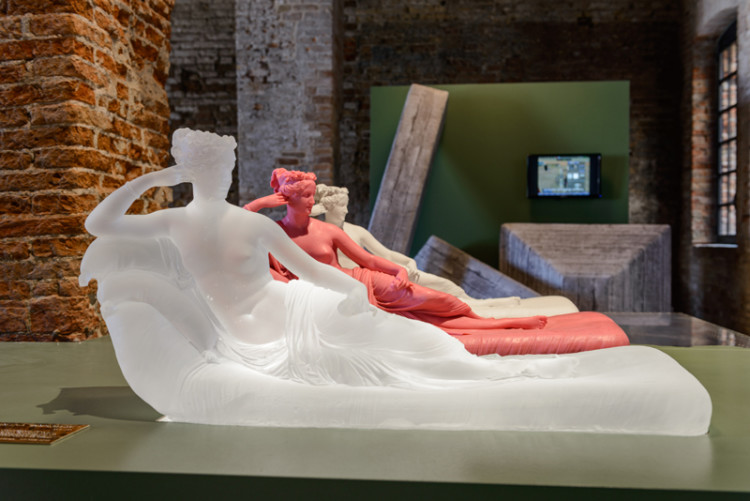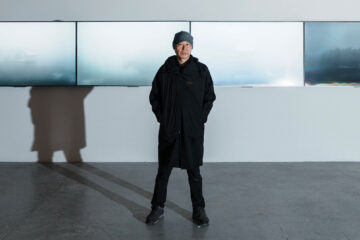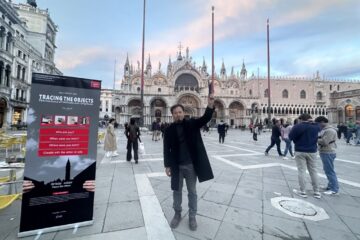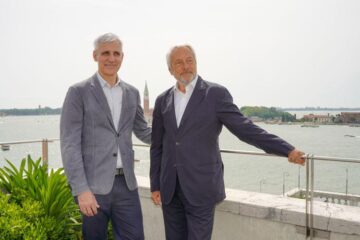SPECIAL PROJECT APPLIED ARTS PAVILION – A WORLD OF FRAGILE PARTS

Following the agreement between La Biennale di Venezia and the Victoria and Albert Museum London
Curator: Brendan Cormier (Victoria and Albert Museum)
Curator’s Team:
Danielle Thom, Research (Victoria and Albert Museum)
Charlotte Churchill, Project Manager (Victoria and Albert Museum)
Ordinary Architecture, Exhibition Design
Realized by La Biennale di Venezia
Venue: Sale d’Armi A, Arsenale
In ‘A World of Fragile Parts’, La Biennale di Venezia and the Victoria and Albert Museum (V&A) explore the threats facing the preservation of global heritage sites and how the production of copies can aid in the preservation of cultural artifacts.
Ecological uncertainty, violent attacks, and the increasing demands of tourism are just a few of the factors putting global heritage sites and cultural artifacts at risk of destruction and loss. Copies and scans have emerged as a way of mitigating risk by providing valuable records of culture, and offering alternatives for a demanding public who want to experience historical sites and objects first-hand.
Museums have a long history of producing copies. In the 19th century, the V&A led an effort to produce and display plaster casts of significant works of art for the benefit of art students and local audiences who could not travel to important sites across Europe and its purpose built Cast Courts in the Museum still remain open today. Cast collections proliferated throughout Europe and America as an educational tool. However, in the early 20th century, attitudes towards the value of copies shifted, and many of these collections were discarded.
For the cast collections that survived however, a new value emerged: preservation. Through decades of careful conservation, museum casts have outlasted many of their originals, which have either been destroyed by war, or degraded through circumstance. These casts are now the prime transmitters of precious knowledge and culture.
With the emergence of new scanning and fabrication technologies, there is a renewed effort to preserve through copies. With that comes a host of difficult questions: What do we copy and how? What distinguishes a bad copy from one with lasting value? What is the relationship between the copy and the original in a society that privileges authenticity? And how can such an effort be properly coordinated at a truly global and inclusive scale? – Brendan Cormier
Brendan Cormier’s Biography
Brendan Cormier is a design curator at the Victoria and Albert Museum, leading the curation of a dedicated V&A gallery as part of a new design museum in Shenzhen, China. Concurrently, together with V&A curator Luisa Mengoni, he is undertaking research into the emerging design landscape of the Pearl River Delta, and how technology, rapid prototyping and an entrepreneurial spirit are combining to turn Shenzhen and its surroundings into a vibrant city of product innovation. Central to this research are the positive roles that copying and iteration can have in the design process. This research was most recently exhibited in ‘Unidentified Acts of Design’, which Brendan co-curated with Luisa Mengoni for the V&A at the 2015 Shenzhen Urbanism\Architecture Biennale.
Prior to his work at the V&A, Brendan served as the managing editor of Volume, an Amsterdam based quarterly on architecture and urbanism, where he worked on crafting themes that speculated on the boundaries of the profession. Issues gathered thoughts, polemics, and opinions from architects and experts from around the world, in the form of essays, interviews, infographics and other visuals.
Brendan co-curated ‘Tortona Stories’ with Fabrizio Gallanti for the Biennale Architettura 2014, which explored the nature of production in the countryside of Piemonte, through the work of three entrepreneurs: a cheesemaker, a winemaker, and a bio-plastics manufacturer. At the same he also assisted in the production of the Iranian Pavilion to be exhibited at the Biennale Architettura 2014, called ‘Instant Past’ and curated by Azadeh Mashayekhi.
Brendan is trained as an urbanist with formal studies in both Canada and Germany. He has also worked for urban design practices in Toronto and Rotterdam. He writes regularly for various design publications, such as Domus, Azure, Uncube, Mark, and Canadian Architect.
About the V&A
The V&A is the world’s leading museum of art and design with collections unrivalled in their scope and diversity. It was established to make works of art available to all and to inspire British designers and manufacturers. Today, the V&A’s collections, which span over 5000 years of human creativity in virtually every medium and from many parts of the world, continue to intrigue, inspire and inform.
www.vam.ac.uk






No Comment